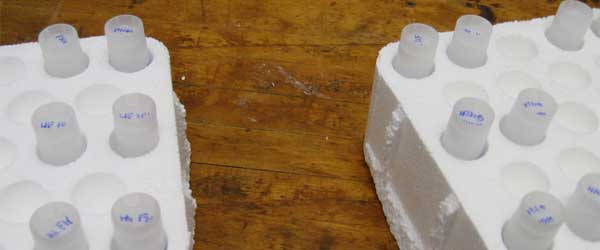Recently we wrote an article about widespread cell culture contamination and how to detect it. This follow-up article will provide practical tips on avoiding cross-contamination in the first place.
Be Cautious While Working
The first way of cross-contaminating cultures is by accidentally mixing two cultures together, which may lead to an unintended co-culture or the displacement of the original line by the faster growing intruder. Here are some tips to keep in mind while working:
- Use a good sterile technique. This will prevent not only cross-contamination, but also bacterial and fungal infections as well. Never assume that the people who worked before you cleaned up after themselves.
- Don’t have vials with different cell lines in the hood at the same time, and always clean in between working with different cell lines.
- If possible, keep different equipment (e.g. bottles and media) for single cell lines, and clearly label the lines they are used for.
- Freeze cell stocks often.
- Regularly check for changes in morphology against a reference and if you suspect there may be cross-contamination, kill the culture and go to the frozen stock.
- Discard cells that have had too many passages.
- Regularly discard waste pots and clean them thoroughly with a disinfectant that is effective against microbes and eukaryotic cells.
Have Organized and Logical Storing
The second common way of getting cell cross-contamination is by mislabelling the working and storage vessels.
- Clearly and indelibly label all your vials, especially those that go into storage.
- Discard stocks that are not clearly labelled.
- Keep good records of stocks in several places in case your hard drives crashes or your shared drives go off-line (usually exactly when you need them!).
- Update your records whenever freezing or retrieving stocks.
Check the Identity of New Cell Lines
In criminology they have something called “chain of custody”. It means that the evidence should be accounted for all times (hence the chain), and a break in the chain leads to the disqualification of the evidence from trial. Make sure of the chain of custody of the cell lines you accept from other sources.
Cell line collections have dedicated people who look after the lines and make sure that they send the correct one. This is rarely the case if the cell line you are given was donated from person A to person B to person C, and so on. Be sure to check the new cell lines: even if the source of your new line is a reputable culture collection, there is always a possibility of a human error. Check out the previous article for methods to authenticate your cell lines.
Cross-Contamination: The Movie
You want to find out more information on cell culture cross contamination? Have a look at this great video presentation about cell cross contamination.
Do you have more tips for preventing cross contamination? Leave them in the comments.







